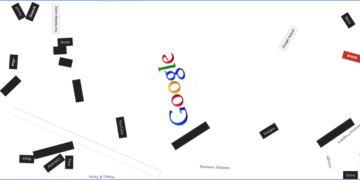In the vast realm of the internet, Google continues to amaze users with innovative and entertaining features. One such fascinating phenomenon is “Google Gravity,” an interactive experience that defies the conventional way we perceive search engines. In this comprehensive exploration, we’ll delve into the origins, mechanics, and cultural impact of Google Gravity, shedding light on its role in the digital landscape.
Google Gravity, although not a new concept, has gained renewed attention in recent times. It’s more than just a search engine; it’s an experience that alters the way users interact with the digital world. Understanding Google Gravity is not only essential for tech enthusiasts but also for anyone curious about the dynamic aspects of the online universe.
What is Google Gravity?
Google Gravity is a whimsical project that originated from the minds of creative developers aiming to add an element of fun to the search experience. Initially conceptualized as a playful experiment, Google Gravity has evolved into a multifaceted phenomenon with various tricks and pranks up its sleeve.
How Does Google Gravity Work?
From a technical perspective, Google Gravity employs gravity simulations in the virtual space. This means that elements on the screen respond to the laws of physics, giving users the sensation of objects falling under the influence of gravity. Understanding the intricacies of these simulations adds a layer of appreciation for the developers’ ingenuity.
Google Gravity Tricks and Pranks
What sets Google Gravity apart are the delightful tricks and pranks hidden within its virtual gravity field. Users can experience gravity-related Easter eggs and engage in entertaining experiments that showcase the platform’s playful side. These elements contribute to the overall user experience, making Google Gravity more than just a search engine.
Google Gravity vs. Anti-Gravity
While Google Gravity embraces the force that keeps objects grounded, the concept of anti-gravity challenges these norms. Exploring the dichotomy between Google Gravity and anti-gravity concepts provides a unique perspective on the interplay of science and technology in the virtual realm.
Impact on Search Experience
The incorporation of gravity effects into the search experience adds a new dimension to user engagement. As users interact with a gravity-infused interface, it raises questions about the implications for SEO and search algorithms. Understanding these dynamics is crucial for website owners and digital marketers.
The Science Behind Google Gravity
Delving into the science behind Google Gravity unveils the physics principles at play. While the platform is primarily designed for entertainment, it inadvertently becomes an educational tool, introducing users to basic concepts of gravity and physics in an engaging manner.
Google Gravity and SEO
For businesses and content creators, the impact of Google Gravity on SEO cannot be overlooked. The altered user experience requires a strategic approach to content creation and optimization. Navigating the gravity-centric search environment demands a proactive stance in adapting to evolving search trends.
User Reactions and Feedback
Social media platforms buzz with user reactions to Google Gravity. From awe-inspired posts to humorous anecdotes, users share their unique experiences with the gravity-infused search engine. Examining these reactions provides insights into the platform’s popularity and user satisfaction.
Challenges and Limitations
While Google Gravity introduces a refreshing take on search, it’s not without challenges. Addressing potential drawbacks and user concerns is essential for the continued success and acceptance of this innovative feature.
Future Trends in Gravity-Infused Search
As technology advances, so does the potential for innovations in gravity-infused search experiences. Speculating on future trends opens the door to exciting possibilities, hinting at how Google Gravity may evolve in the years to come.
Google Gravity in Popular Culture
Beyond its digital domain, Google Gravity has made its mark in popular culture. References in movies, TV shows, and literature showcase its cultural impact, turning it into a recognizable symbol in the collective consciousness.
Google Gravity for Businesses
Businesses, always on the lookout for unique marketing strategies, can leverage Google Gravity for promotional purposes. Incorporating gravity-themed campaigns adds a touch of creativity that resonates with users in a memorable way.
Google Gravity and Mobile Devices
As mobile devices dominate the digital landscape, exploring the compatibility and user experience of Google Gravity on these platforms becomes crucial. Adapting to mobile search trends ensures that the gravity-infused experience reaches a broader audience.
Conclusion
In conclusion, Google Gravity is more than a search engine feature; it’s an exploration of the intersection between technology, entertainment, and user experience. By taking a closer look at its origins, mechanics, and impact, users can gain a deeper appreciation for the creative forces shaping the digital world.
Mastering Freelance Digital Marketing: Tips for Success
FAQs For Google Gravity
Is Google Gravity a new feature?
Google Gravity has been around for some time but continues to evolve with new tricks and experiences.
How does Google Gravity affect website rankings?
While Google Gravity itself doesn’t directly impact rankings, understanding user behavior in a gravity-centric environment is crucial for SEO.
Can Google Gravity be disabled?
No, Google Gravity is a feature embedded in the search engine interface and cannot be disabled.
Are there any educational benefits to Google Gravity?
Yes, Google Gravity introduces users to basic physics principles in an interactive and engaging manner.
Is Google Gravity available on all devices?
Google Gravity is compatible with most devices, but optimizing the experience for mobile is essential.


























